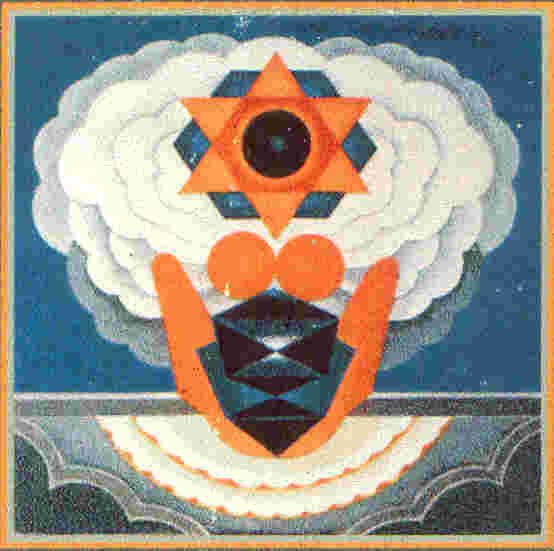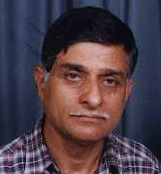|

|

|
|
Kashmiri Pandits' Association, Mumbai, India |

|
| | Home | January-March 2002 Issue | |
|
Story
Charu & the Witch ... Uncle M.K. Raina
Kolur village was situated on the left bank of Hapatara, and most of it would get inundated during rains because of floods. There was no inhabitation on the other side of the stream. The bank on this side of the stream was covered with thorny bushes, to provide a security barrier, to both the villagers and the cattle. Villagers would not venture on this side of the stream unless it was imperative. This area was a vast stretch of low-lying land, covered with wild vegetation and stagnant waters. Beyond it, was a very deep ravine and a high, snow peaked mountain called ‘Vismainag’. Vismainag was densely covered with vegetation consisting of numerous herbs and poisonous plants. During the winter months, especially on the Amavasya night , people would hear heart ripping screams emanating from the Vismainag. Villagers would not dare to venture near this mountain, because many, who did in the past did not return back. Across Vismainag, they had heard from their forefathers, was a fort, which was inhabited by a witch. It was said that the witch had two long horns, and her eyes were flashing. It was believed, the witch would get hold of anyone coming that way and chant mantras to squeeze their souls out. The souls were put into a glass jar and the dead bodies tied to the tall trees in her courtyard. Villagers believed that all these people would be resurrected by an angel, who would one day descend from the heavens. There was no proof to support these myths and beliefs, but for some episodes reported by the villagers. Five years ago, a strange incident took place. The brown horse of a village elder, Samang, turned violent while looking at the mountain, and crossed over to that side of Hapatara, never to return back. Samang said he saw a white robed lady, almost five times the size of a normal human being, riding on the horse back and waving with her long outstretched arms, atop the mountain. Yet, another tragic episode, corroborating the existence of a witch, took place: One day, in early spring, Charu and his friends Ketak and Gulu were playing hide and seek on the banks of Hapatara. During the course of play, Guloo hid himself behind a large boulder in the middle of the stream. Ketak and Charu, looked for him. Not finding him around on the bank, they quietly stepped into the waters of Hapatara. A couple of boys, were enjoying the game while seating by the riverside. To their dismay, dark clouds moving across the Vismainag engulfed the Sun momentarily. A strong hailstorm followed, giving the boys no time to come out of the stream. Charu and Ketak held each other’s hand firmly and managed to come out and take shelter under a big cliff. But Gulu was not to be seen. Charu and Ketak called out to him, at their best but to no avail. After some time, the sky cleared and it was bright and sunny once again, but Gulu was not around. Charu and Ketak went into the stream again, looked at all the possible hideouts, but there was no trace of Gulu. The two friends, weeping bitterly, decided to return home and break the tragic news. On their way back they heard strange sounds from across the stream. They turned around to look and saw the water in the pond under a big tree, with serpentine like branches, splashing by itself. Terror stricken, they lied down on the sands and watched the scene. They first saw an out stretched arm rising out of the waters, then a giant sized body, of a woman in white robes. She had Gulu tightly clutched in her left hand as she walked towards Vismainag. Gulu remained motionless, as if under a spell. Soon the woman was out of sight. Charu and Ketak, terrified by the sight, ran homewards. They related the incident to one another, to make sure they were not daydreaming. Charu had noticed Gulu looking back while passing over the mountain but Ketak had not. Charu was sure, he had noticed two horns on the Witch’s head and had also heard Gulu calling him for help. Days
passed by, yet, Charu could not help thinking about Gulu. What would the
witch have done to him? Would she have taken out his soul and tied
him to a tree? or Would she have eaten him alive? were some questions which
sent a shiver down his spine. Ketak was not in his senses ever since that
day. Village elders were helpless. No one dared to go to Vismainag and
look out for Gulu. Even Gulu’s parents were scared.
Charu dreamt, he was mounted on a horseback and flying in the air. He could see the village below. He flew over the jungles, over the snow capped mountains and rivers and over the dark and rainy clouds. As he looked below, he saw a number of small children playing in the waters of a lake. Water in the lake was clear and sky blue in colour. He descended a little and watched closely. He saw some children dragging a boy. The boy was trying to free himself from their hold but they would not let him go. They forced him to dive into the water, but he managed to free himself. He ran and sat under a tree, wailing. The boy, with his watery eyes looked at the sky. Charu dismounted from his horse back and came closer to wailing boy. He looked up, murmured something and hung his head down. Charu asked him why he was wailing? The boy replied, “I have lost my friend while we were playing in the lake. Will you help me to find him?” Both of them then mounted the horseback. The horse entered into the waters of the lake and reached its bottom. They saw a small boy tied to a large shell, with an iron chain. His eyes were sore. He looked at them and screamed for help. The shell had to be broken into two to free the boy but they did not have the means. Before Charu could think, he heard a loud roar, the like of which he had never heard before. They saw a Rakshasa (Demon), sitting on a huge diamond throne, at some distance behind the shell. There were more than a dozen of demon servants serving him. The boys were scared. Rakshasa lifted his long magic wand and shot it at Charu. It came with a thundering sound, circling and swimming through the water. Charu bent his head and the wand hit the shell in the middle, which broke into two. The boy was freed but Charu fell down unconscious, as one of the pieces had hit him. Charu woke up, and looked around. Finding himself still on the bank of Hapatara holding the earthen doll in his arms, he felt baffled. Was this a signal from the gods that Gulu was alive, and in trouble, needing help. That very moment Charu vowed that he would not rest till he found his friend and liberated him. |
|
|
JOIN US |
|
|

 Long
long ago, across the high snow peaked mountains, was a Village called
Kolur. Kolur was situated at the foot of a small hill. A mountain stream
‘Hapatara’ flowed near by. Hapatara had knee-deep water during the summer
months, which would generally freeze at the top during harsh cold winters.
Stones and boulders in the Hapatara, covered with snow during winter, presented
a frightful sight to the village children, who could not play in its waters
like they would, during the Summer. Come rains, and this small stream
would get transformed into a turbulent river, carrying with it, boulders,
big and small, uprooted trees and logs of wood from the upper reaches.
Elders in the Village believed that the flood waters also brought with
it, evil spirits.
Long
long ago, across the high snow peaked mountains, was a Village called
Kolur. Kolur was situated at the foot of a small hill. A mountain stream
‘Hapatara’ flowed near by. Hapatara had knee-deep water during the summer
months, which would generally freeze at the top during harsh cold winters.
Stones and boulders in the Hapatara, covered with snow during winter, presented
a frightful sight to the village children, who could not play in its waters
like they would, during the Summer. Come rains, and this small stream
would get transformed into a turbulent river, carrying with it, boulders,
big and small, uprooted trees and logs of wood from the upper reaches.
Elders in the Village believed that the flood waters also brought with
it, evil spirits.


